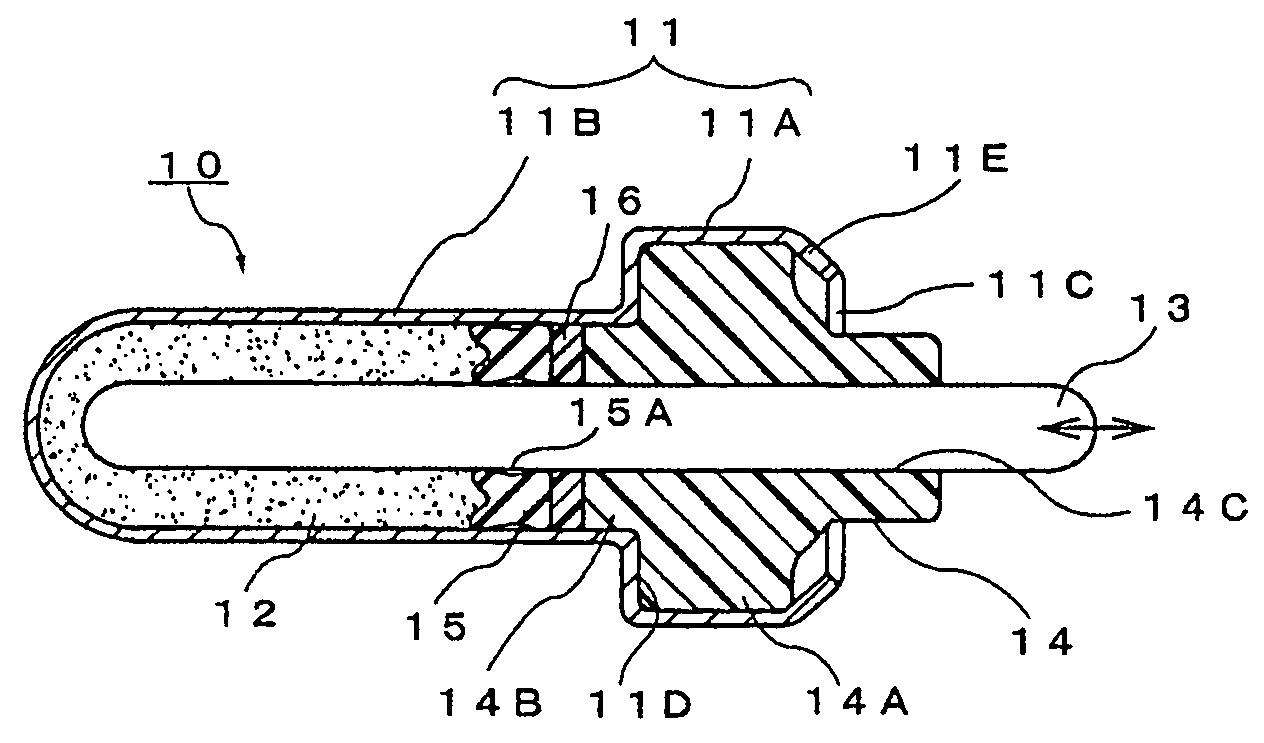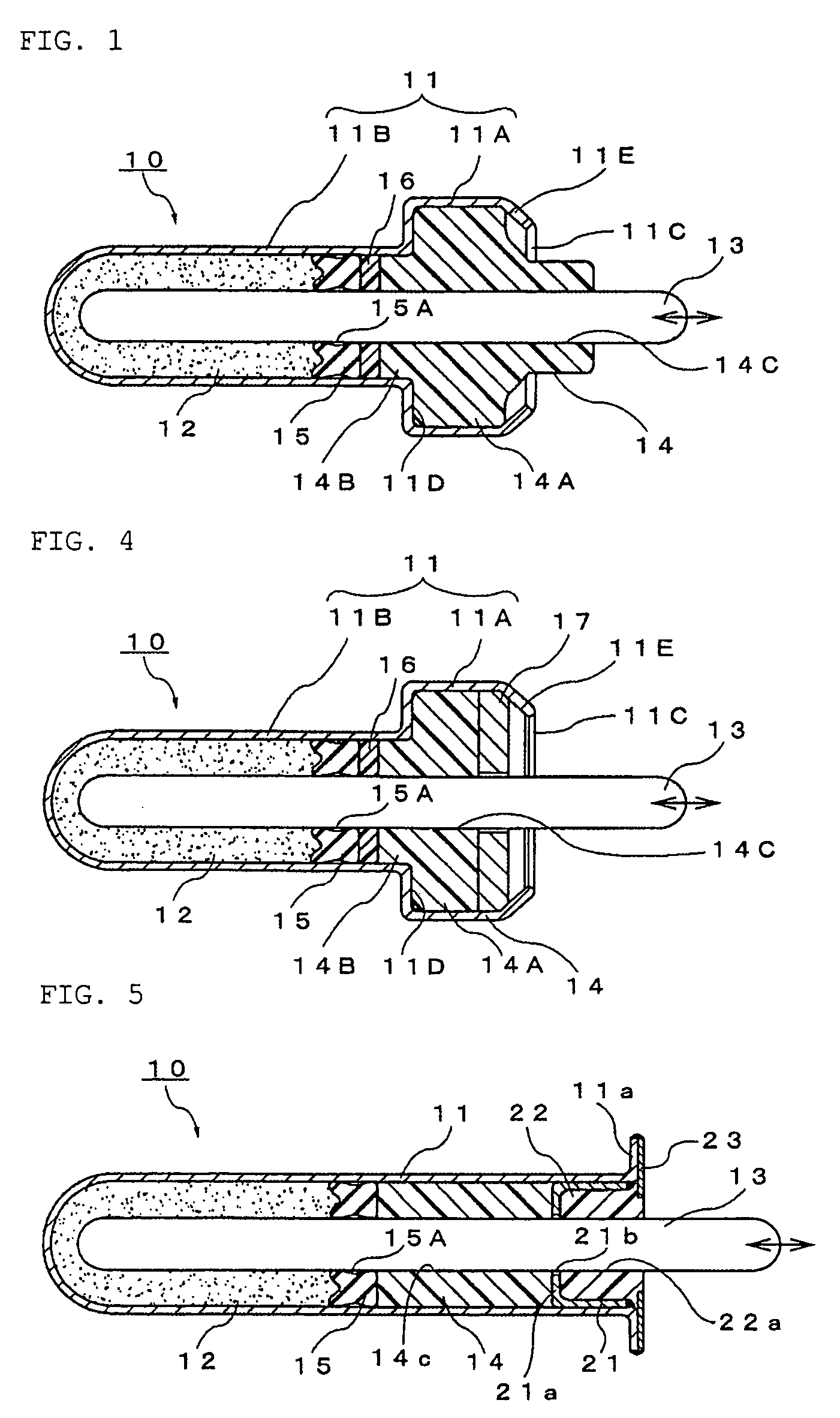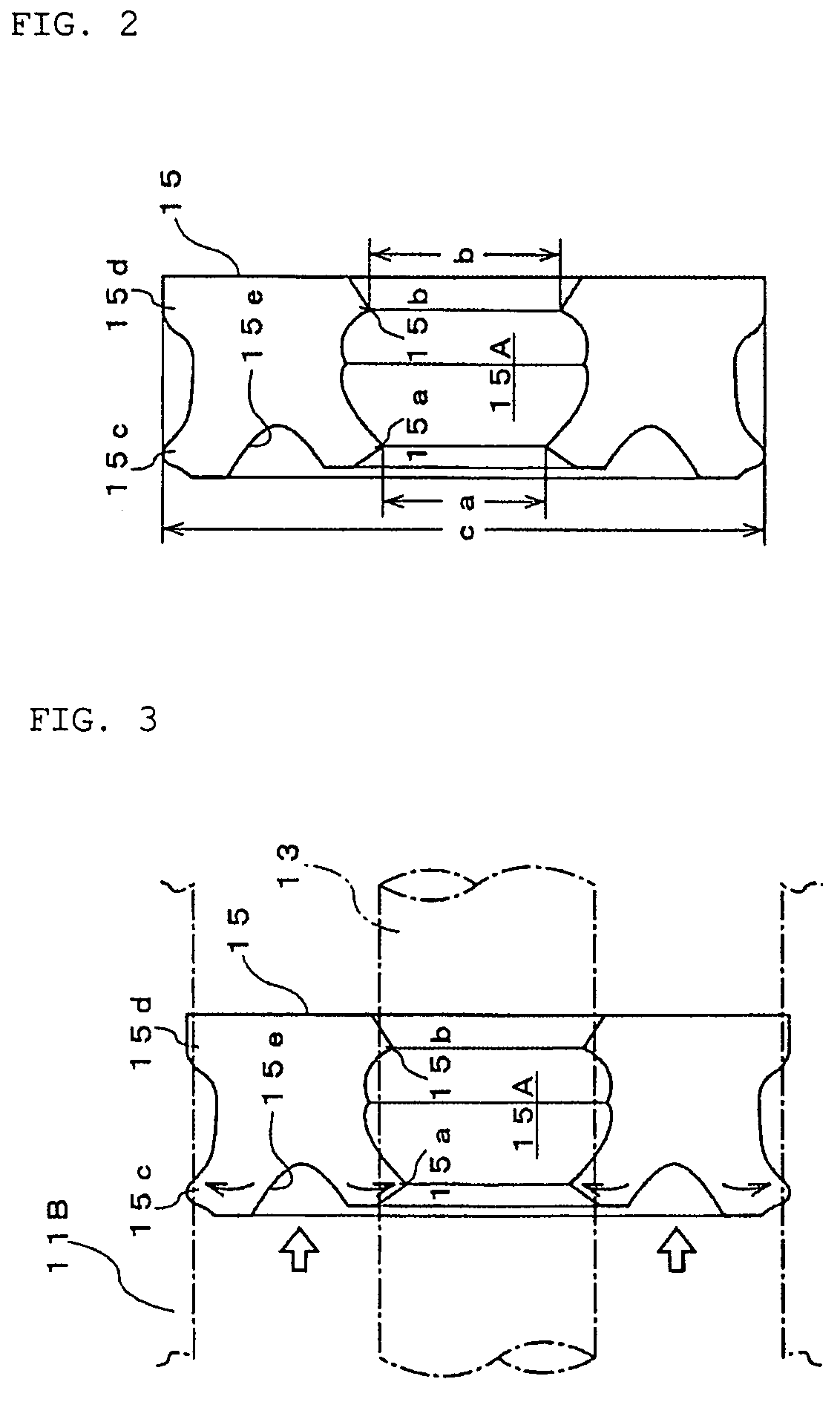Thermoelement
a technology of thermoelement and piston, which is applied in the field of thermoelement, can solve the problems of inability to obtain long piston stroke, inability to warm up the engine, and inability to respond to problems, so as to facilitate the return of the piston, improve the response, and facilitate the effect of stroke length
- Summary
- Abstract
- Description
- Claims
- Application Information
AI Technical Summary
Benefits of technology
Problems solved by technology
Method used
Image
Examples
first embodiment
[0036]FIGS. 1 to 3 illustrate the thermal element in accordance with the present invention.
[0037]A thermal element denoted in those figures with the reference numeral 10 will be explained hereinbelow with reference to FIG. 1. Thus, the reference numeral 11 stands for a metal case constituting the thermal element body. Wax 12 serving as a thermally expandable body which thermally expands and shrinks under the effect of heat from the outside of the case 11 is sealed inside the case 11. The case 11 may be formed by press forming from any material capable of adequately transferring heat from the outside.
[0038]The reference numeral 13 stands for a piston disposed along the axial direction inside the case 11. Because the inward end of the piston 13 borders on the inside of the wax 12 and the outward end of the piston protrudes outwardly from one end of the case 11, the piston can move forward and backward along the axis, following the expansion and contraction of the wax. The operation of...
third embodiment
[0061]FIG. 5 illustrates the thermal element in accordance with the present invention.
[0062]In the figure, the thermal element denoted by the reference numeral 20 comprises a metal case 11 composed of a closed-end tubular hollow container having a substantially uniform diameter, and a wax 12 as a thermally expandable body that can be thermally expanded and contracted under the thermal effect from the outside of the case 11 is sealed in the closed-end portion of the case.
[0063]A piston 13 is disposed along the axial direction inside the case 11, the inward end of the piston borders on the inside of the wax 12 and the outward end thereof protrudes outwardly from the opening of the case 11, such a configuration allowing the piston to move forward and backward along the axial line, following the expansion or contraction of the wax 12. The operation of retracting the piston 13 into the case 11 is carried out by an impelling force, for example, of a return spring provided at the outside, ...
PUM
| Property | Measurement | Unit |
|---|---|---|
| temperature | aaaaa | aaaaa |
| temperature | aaaaa | aaaaa |
| shape | aaaaa | aaaaa |
Abstract
Description
Claims
Application Information
 Login to View More
Login to View More - R&D
- Intellectual Property
- Life Sciences
- Materials
- Tech Scout
- Unparalleled Data Quality
- Higher Quality Content
- 60% Fewer Hallucinations
Browse by: Latest US Patents, China's latest patents, Technical Efficacy Thesaurus, Application Domain, Technology Topic, Popular Technical Reports.
© 2025 PatSnap. All rights reserved.Legal|Privacy policy|Modern Slavery Act Transparency Statement|Sitemap|About US| Contact US: help@patsnap.com



